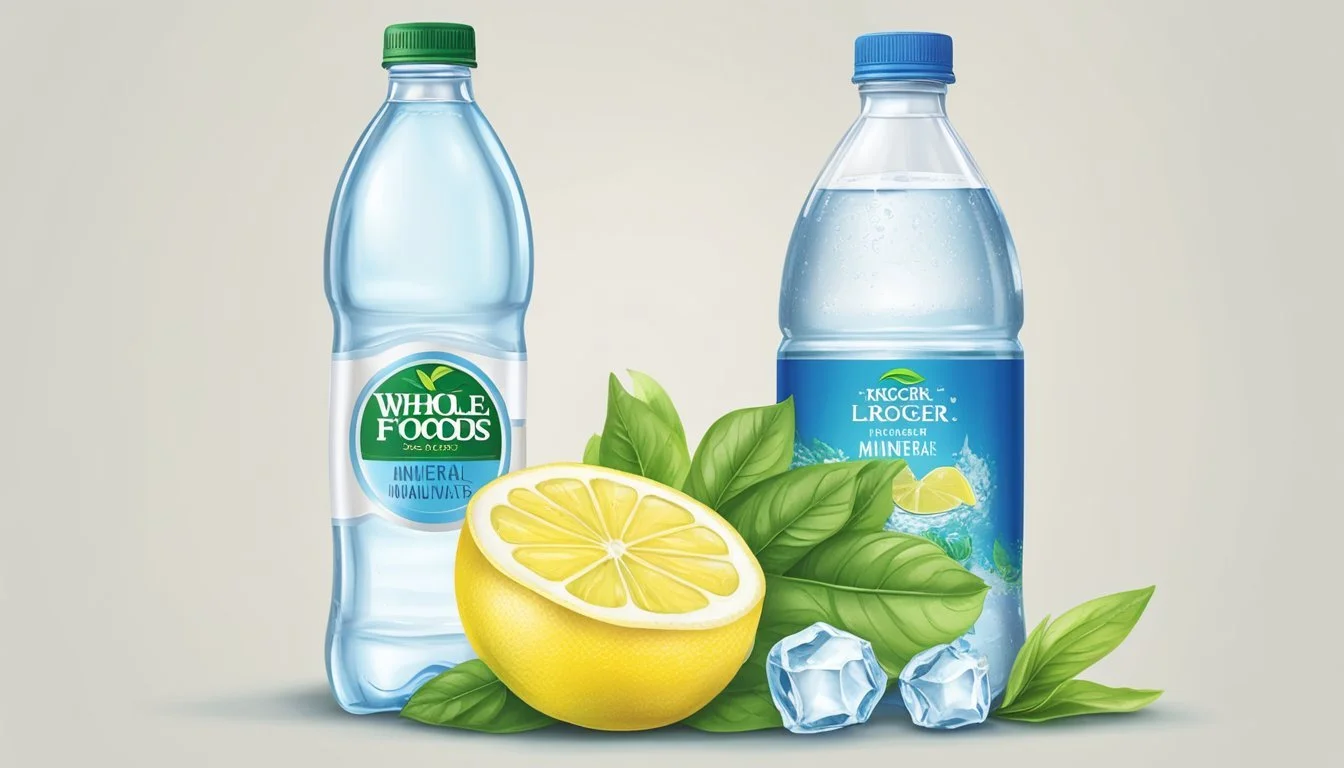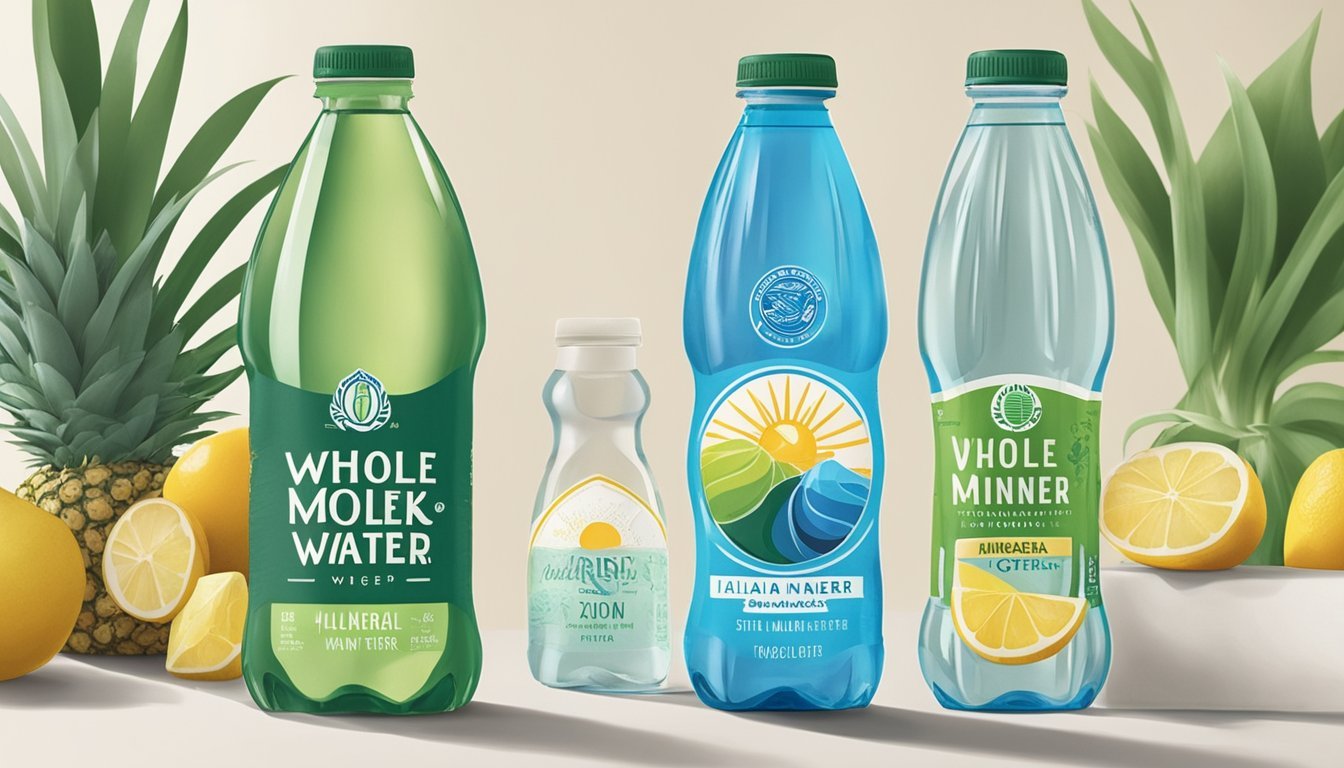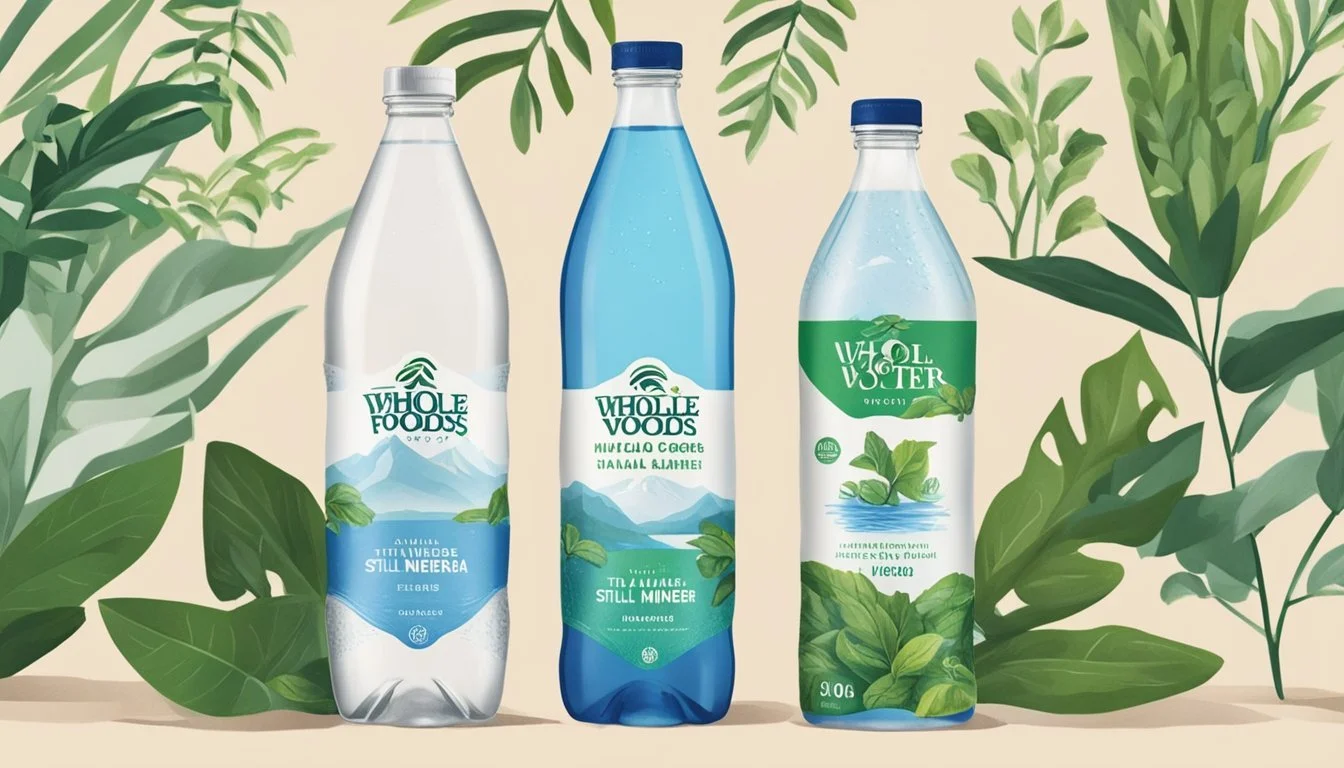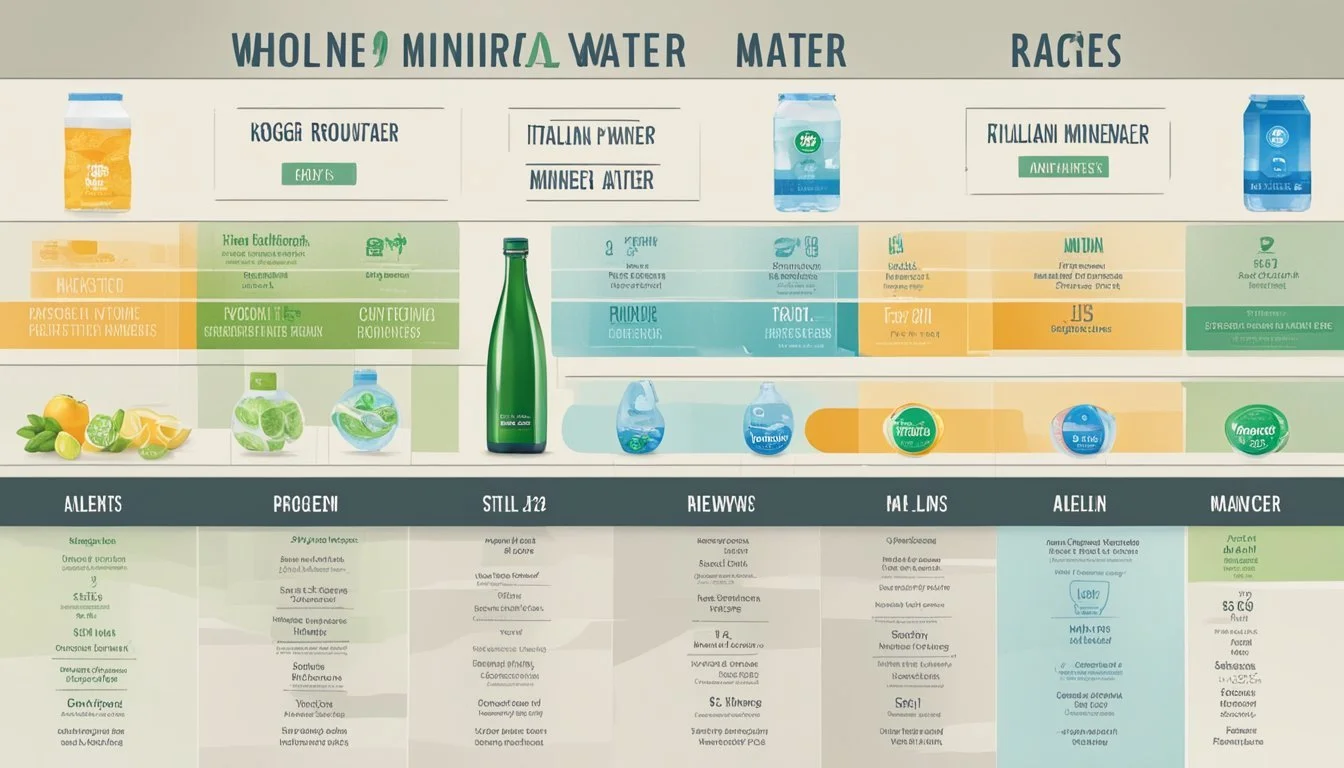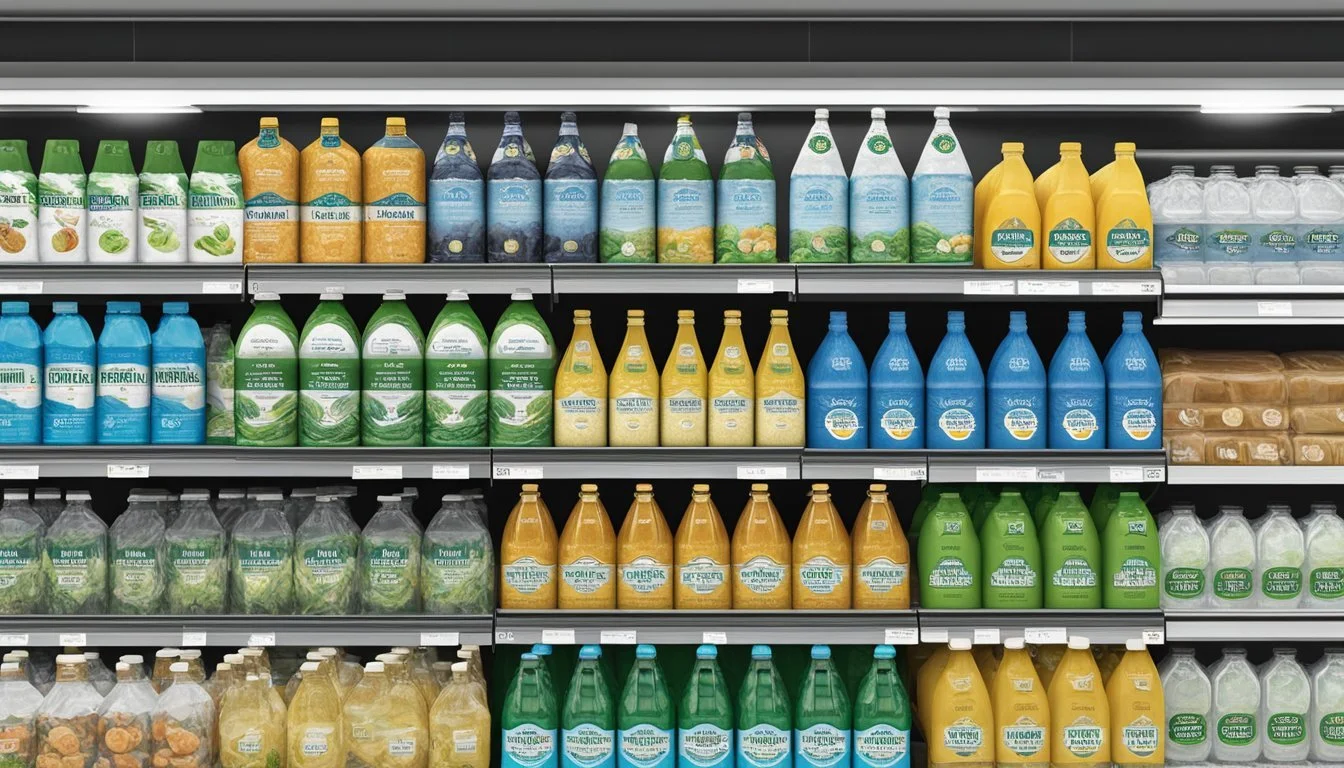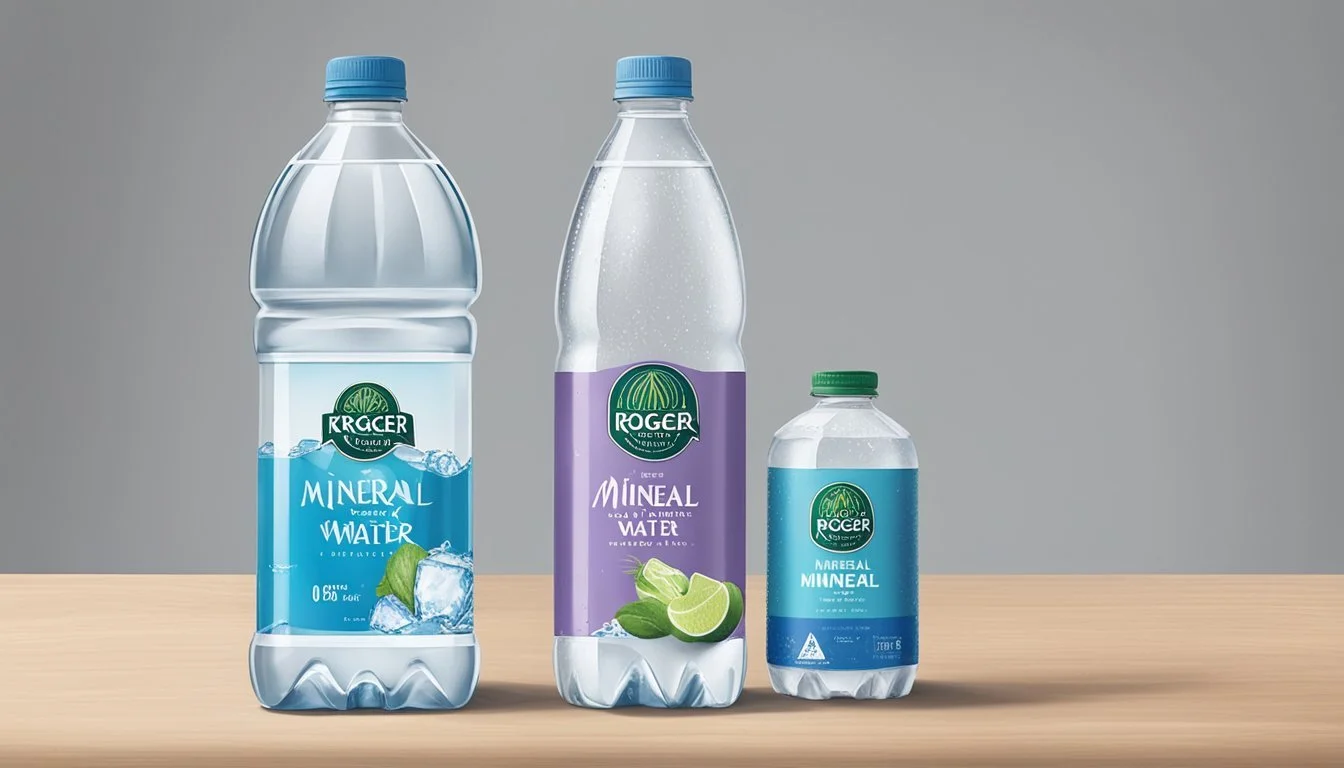Whole Foods Italian Still Mineral Water vs. Kroger
A Clear Comparison
When it comes to bottled water, discerning consumers often face a bewildering array of choices. Whole Foods Italian Still Mineral Water and Kroger bottled water are two popular options, each with its own set of attributes. Whole Foods Italian Still Mineral Water boasts purity sourced from renowned regions in Italy and embodies a commitment to quality and sustainability, making it a premium choice.
Kroger bottled water, on the other hand, offers accessibility and value, catering to a wide audience seeking hydration without straining their wallets. Each brand has its unique advantages that appeal to different consumer preferences and priorities. By comparing these two brands, readers can make an informed decision about which product best suits their needs.
Choosing between these two brands involves considering factors such as taste, mineral content, and price. The article will delve into these aspects to provide a comprehensive comparison that helps consumers select the best bottled water for their lifestyle. By examining the distinct qualities and benefits of Whole Foods and Kroger bottled waters, readers will gain a clearer perspective on which option aligns with their preferences and priorities.
Comparative Overview of Brands
Whole Foods Italian Still Mineral Water and Kroger bottled water products differ in their sources, mineral content, and positioning in the market. This section takes a closer look at each brand to provide a better comparison.
Whole Foods Italian Still Mineral Water: Brand Profile
Whole Foods Italian Still Mineral Water is sourced from select springs in Italy. This product aims to offer premium hydration with a mineral profile that enhances taste and health benefits. The water's origin provides a crisp and refreshing taste that appeals to discerning consumers.
The brand aligns itself with quality and purity, assuring consumers of a reliable choice in hydration. The bottles are typically available in recyclable glass, reinforcing Whole Foods' commitment to sustainability.
Consumers often choose this brand for its authenticity, high standards, and consistent quality. It's a slightly more expensive option, reflecting its premium positioning in the market.
Kroger: Brand Profile
Kroger bottled water is known for offering a budget-friendly option without sacrificing quality. Sourced from multiple locations, the water undergoes rigorous purification processes to ensure safety and cleanliness.
Kroger positions its bottled water as an accessible alternative for everyday hydration needs. The product is packaged in lightweight plastic bottles, designed for convenience and easy transport.
While it may not offer the same premium mineral content as specialty brands like Whole Foods, it meets essential hydration requirements effectively. Kroger provides an economical choice for consumers looking for reliable, affordable bottled water. This makes it particularly popular for daily use and among families.
The Source Matters
The origin and processing of bottled water play crucial roles in determining its purity and taste. Understanding where each brand sources its water and the methods used for purification is essential.
Origin and Processing of Whole Foods Italian Still Mineral Water
Whole Foods Italian Still Mineral Water is sourced from select springs in Italy. These springs are known for their high mineral content and pristine quality.
Italy's natural spring water is often celebrated for its purity. The water is drawn directly from deep spring sources and is bottled with minimal processing to retain its rich mineral profile.
This mineral water does not contain additives or chemicals, ensuring a natural taste. The emphasis on local, Italian sources provides a product that reflects the unique geological characteristics of the region.
Source and Purification of Kroger Bottled Water
Kroger Bottled Water, in contrast, typically sources its water from local municipal supplies. This tap water undergoes a stringent purification process before it is bottled.
Common methods include reverse osmosis, carbon filtration, and UV treatment. These steps ensure that impurities and contaminants are removed, making the water safe and clean for consumption.
Unlike Italian mineral water, Kroger’s process involves more treatment and less dependency on natural spring sources. This results in a different taste profile and mineral content. The focus is on providing reliable, accessible bottled water for everyday use.
Composition and Health Benefits
Whole Foods Italian Still Mineral Water and Kroger bottled water differ significantly in their mineral content, pH levels, and the presence of essential electrolytes. The key distinctions between these two brands highlight their unique health benefits and overall composition.
Mineral Content Analysis
Whole Foods Italian Still Mineral Water is sourced from La Galvanina Spa Source in Rimini, Italy. This water is noted for its rich mineral content, including calcium and magnesium. These essential minerals contribute to bone health and muscle function. Regular intake can support overall well-being.
Contrarily, Kroger bottled water doesn't always specify its mineral content. This variability can affect its health benefits. Consumers looking for a consistent mineral profile might prefer the standardized minerals found in Whole Foods Italian Still Mineral Water.
Mineral Whole Foods Italian Still Mineral Water (mg/L) Kroger Bottled Water (varies) Calcium 58 0-50 Magnesium 21 0-15 Potassium Trace Trace
Understanding pH and Health Implications
The pH level of water impacts its taste and potential health benefits. Whole Foods Italian Still Mineral Water typically has a balanced pH range around 7.5-8.5. This alkaline nature can aid in neutralizing stomach acidity, promoting better digestion.
In contrast, Kroger bottled water can have a more variable pH range. This inconsistency may not provide the same digestive benefits as the consistently alkaline Whole Foods option. Maintaining a balanced pH is crucial for those with sensitive stomachs or acid reflux.
Brand pH Range Whole Foods Italian Still Water 7.5-8.5 Kroger Bottled Water 6.5-8.0
The Role of Electrolytes in Hydration
Electrolytes like potassium, magnesium, and calcium are essential for optimal hydration and muscle function. Whole Foods Italian Still Mineral Water includes these electrolytes naturally. For those engaging in physical activities, these minerals can help maintain electrolyte balance and prevent muscle cramps.
Kroger bottled water may lack sufficient electrolytes due to processing, making it less beneficial for hydration needs compared to its Whole Foods counterpart. By choosing water with a richer electrolyte profile, consumers can better support their hydration and muscle recovery.
Both brands provide options for daily hydration, but the inclusion of essential minerals in Whole Foods Italian Still Mineral Water offers additional health benefits that may be more consistent and beneficial for long-term consumption.
Taste Profile
Whole Foods Italian Still Mineral Water and Kroger bottled water offer distinct taste experiences shaped by their sources and mineral compositions. Exploring these differences helps consumers make an informed choice based on their preferences.
Flavor Comparison
Whole Foods Italian Still Mineral Water is sourced from Italy and boasts a balanced mineral content that provides a refreshingly crisp and clean taste. This water has a subtle mineral flavor that adds to its refreshing quality without being overpowering.
Kroger bottled water, on the other hand, is typically sourced from local springs and filtered tap water. It generally offers a neutral and clean taste, with fewer distinctive mineral notes compared to Whole Foods' offering. This makes it a straightforward option for those seeking simplicity.
Water Sommelier Insights
Water sommeliers note that Whole Foods Italian Still Mineral Water excels in its balance of minerals, giving it a distinct yet mild flavor profile. The natural sourcing and minimal processing contribute to its crisp and clean taste, often described as lightly refreshing.
Kroger bottled water, while dependable, lacks the unique flavor profile associated with naturally sourced mineral water. Its appeal lies in its consistency and neutrality, making it versatile and suitable for various uses, including cooking and mixing with other beverages.
Environmental and Health Considerations
Whole Foods Italian Still Mineral Water and Kroger Bottled Water both present unique environmental and health profiles. This section examines the materials used in their bottles, their overall environmental impact, and the safety standards they follow.
Evaluating Bottling Materials
Whole Foods Italian Still Mineral Water typically uses BPA-free plastic or glass bottles. Glass is often preferred for its recyclability and lack of chemical leaching. BPA-free plastics are a safer alternative to traditional plastics, reducing exposure to harmful chemicals.
Kroger Bottled Water often comes in standard PET plastic bottles. These are recyclable but can contribute to microplastic pollution. The choice between glass and BPA-free plastics vs. PET plastics involves trade-offs between health safety and environmental impact.
Assessing Environmental Impact
Glass bottles from Whole Foods are recyclable and environmentally friendly. However, they have a higher carbon footprint due to transportation weight. The BPA-free plastic bottles, while lighter, also reduce overall plastic waste.
Kroger’s PET bottles, while recyclable, contribute to plastic pollution if not properly disposed of. The prevalence of plastic means higher production and waste, creating environmental concerns. Comparing the two, Whole Foods’ use of glass and BPA-free plastic offers a more sustainable option.
Safety Standards and Quality Reports
Whole Foods Italian Still Mineral Water adheres to rigorous safety standards. The brand often publishes quality reports detailing mineral content and contaminant levels. This transparency ensures customers are informed about what they consume.
Kroger Bottled Water also meets EPA regulations for drinking water. It undergoes regular quality checks to ensure safety. However, fewer details about mineral content and contaminants are publicly available compared to Whole Foods. This difference in transparency can influence consumer trust and preference.
By examining the bottling materials, environmental impact, and safety standards, consumers can make informed decisions about which water aligns better with their values and health needs.
Market Analytics and Consumer Preferences
The bottled water market is highly competitive, and consumer preferences often sway their purchasing decisions. Factors such as wellness trends, price sensitivity, and brand trust play crucial roles.
Bottled Water Market Trends
The demand for bottled water has been on the rise, driven by increasing focus on hydration and wellness. Whole Foods Italian Still Mineral Water and Kroger are popular choices in grocery stores.
Whole Foods positions its product as a premium option, sourced from renowned regions in Italy. This approach appeals to consumers seeking health benefits and purity. Kroger, on the other hand, offers a cost-effective solution without sacrificing quality, making it appealing to budget-conscious shoppers.
Recent market analysis shows a trend towards sustainability and eco-friendly packaging. Consumers are willing to pay more for brands that align with their environmental values. Both brands have responded by improving their packaging and sourcing processes.
Understanding Consumer Choices
Consumer preferences in bottled water are influenced by several factors. Price remains a critical consideration. Whole Foods Italian Still Mineral Water tends to be priced higher, reflecting its premium positioning, while Kroger offers a more affordable alternative.
Brand trust and product quality are also essential. Consumers rely on brands that have established reputations for purity and safety. They look for labels indicating natural mineral content and certified sources.
The trend towards health and wellness strongly impacts choices. Bottled water perceived to have health benefits, such as higher mineral content, garners consumer favor. In-store promotions and bulk purchasing options further influence buying behavior, encouraging trial and increasing loyalty.
Identifying and understanding these trends and preferences help brands tailor their offerings to meet market demands effectively.
Regulatory and Industry Standards
Whole Foods Italian Still Mineral Water and Kroger's bottled water must comply with stringent regulations and industry guidelines to ensure safety and quality. This section delves into the specifics of these requirements, highlighting the key regulatory bodies and standards that govern the production and distribution of bottled water.
International Bottled Water Association Guidelines
The International Bottled Water Association (IBWA) sets strict guidelines for its members to ensure the purity and safety of bottled water. These guidelines include standards for water source selection, purification processes, and packaging.
Members of the IBWA undergo regular third-party audits to verify compliance.
Both Whole Foods and Kroger’s bottled water adhere to these guidelines, emphasizing their commitment to providing safe and high-quality products. By following the IBWA's standards, these brands ensure that their water is free from harmful contaminants and safe for consumption.
Legal and Safety Framework
Bottled water in the United States is regulated by the Food and Drug Administration (FDA) under the Federal Food, Drug, and Cosmetic Act. The FDA’s Standards of Identity define classifications such as drinking water, mineral water, and spring water.
Both Whole Foods Italian Still Mineral Water and Kroger’s bottled water must meet these standards to be legally sold. The Environmental Protection Agency (EPA) sets similar standards for tap water, ensuring comparable safety and quality levels.
Compliance with these regulations ensures that bottled water is free from contaminants and safe for human consumption. Additionally, the Safe Drinking Water Act mandates regular testing and reporting of water quality, further ensuring consumer safety.
Conclusion: Which Water Wins?
Whole Foods Italian Still Mineral Water presents a strong case for consumers prioritizing pure and natural mineral content. Sourced from select springs in Italy, it delivers a rich mineral profile while maintaining budget-friendly pricing.
Kroger offers a more widely accessible option. Often sourced domestically, it aims to meet hydration needs without the premium often associated with imported brands.
Quality and Minerals
Brand Source Notable Minerals Whole Foods Italian Still Springs in Italy Magnesium, Calcium Kroger Domestic sources Varies
Price Considerations
Whole Foods Italian Still: More affordable for an imported brand.
Kroger: Generally the most budget-friendly option due to domestic sourcing.
Consumer Preferences
Consumers valuing mineral content and imported purity might lean towards Whole Foods Italian Still. Those emphasizing affordability and accessibility may find Kroger more appealing.
Hydration Needs
Both brands effectively support hydration needs. Each serves different preferences: Whole Foods Italian Still for mineral-rich water and Kroger for easily accessible hydration.
Final Thoughts:
Whole Foods Italian Still for purity and mineral content.
Kroger for accessibility and cost-effectiveness.
Both brands have unique strengths, catering to diverse consumer preferences.
More About Whole Foods Italian Still Mineral Water
Acqua Pana vs Whole Foods Italian Still Mineral water: Which Bottled Water is Better?
Antipodes vs Whole Foods Italian Still Mineral water: Which Bottled Water is Better?
Aqua Carpatica vs Whole Foods Italian Still Mineral water: Which Bottled Water is Better?
Aquafina vs Whole Foods Italian Still Mineral water: Which Bottled Water is Better?
Arrowhead vs Whole Foods Italian Still Mineral water: Which Bottled Water is Better?
Bai vs Whole Foods Italian Still Mineral water: Which Bottled Water is Better?
Boxed Water vs Whole Foods Italian Still Mineral water: Which Bottled Water is Better?
Castle Rock vs Whole Foods Italian Still Mineral water: Which Bottled Water is Better?
Core Hydration vs Whole Foods Italian Still Mineral water: Which Bottled Water is Better?
Deer Park vs Whole Foods Italian Still Mineral water: Which Bottled Water is Better?
Erewhon vs Whole Foods Italian Still Mineral water: Which Bottled Water is Better?
Essentia vs Whole Foods Italian Still Mineral water: Which Bottled Water is Better?
Eternal vs Whole Foods Italian Still Mineral water: Which Bottled Water is Better?
Ethos vs Whole Foods Italian Still Mineral water: Which Bottled Water is Better?
Evian vs Whole Foods Italian Still Mineral water: Which Bottled Water is Better?
Fiji vs Whole Foods Italian Still Mineral water: Which Bottled Water is Better?
Flow vs Whole Foods Italian Still Mineral water: Which Bottled Water is Better?
Hawaii Volcanic vs Whole Foods Italian Still Mineral water: Which Bottled Water is Better?
Hawaiian Springs vs Whole Foods Italian Still Mineral water: Which Bottled Water is Better?
Ice Mountain vs Whole Foods Italian Still Mineral water: Which Bottled Water is Better?
Icelandic Glacial vs Whole Foods Italian Still Mineral water: Which Bottled Water is Better?
Just Water vs Whole Foods Italian Still Mineral water: Which Bottled Water is Better?
LIFEWTR vs Whole Foods Italian Still Mineral water: Which Bottled Water is Better?
Liquid Death vs Whole Foods Italian Still Mineral water: Which Bottled Water is Better?
Mananalu vs Whole Foods Italian Still Mineral water: Which Bottled Water is Better?
Nestle Pure Life vs Whole Foods Italian Still Mineral water: Which Bottled Water is Better?
Origin vs Whole Foods Italian Still Mineral water: Which Bottled Water is Better?
Ozarka vs Whole Foods Italian Still Mineral water: Which Bottled Water is Better?
Path vs Whole Foods Italian Still Mineral water: Which Bottled Water is Better?
Penta vs Whole Foods Italian Still Mineral water: Which Bottled Water is Better?
Perrier vs Whole Foods Italian Still Mineral water: Which Bottled Water is Better?
Poland Spring vs Whole Foods Italian Still Mineral water: Which Bottled Water is Better?
Purely Sedona vs Whole Foods Italian Still Mineral water: Which Bottled Water is Better?
San Pellegrino vs Whole Foods Italian Still Mineral water: Which Bottled Water is Better?
Smartwater vs Whole Foods Italian Still Mineral water: Which Bottled Water is Better?
Solan de Cabras vs Whole Foods Italian Still Mineral water: Which Bottled Water is Better?
Starkey vs Whole Foods Italian Still Mineral water: Which Bottled Water is Better?
Tahoe vs Whole Foods Italian Still Mineral water: Which Bottled Water is Better?
Topo Chico vs Whole Foods Italian Still Mineral water: Which Bottled Water is Better?
Tru Alka vs Whole Foods Italian Still Mineral water: Which Bottled Water is Better?
Volvic vs Whole Foods Italian Still Mineral water: Which Bottled Water is Better?
Voss vs Whole Foods Italian Still Mineral water: Which Bottled Water is Better?
Waiakea vs Whole Foods Italian Still Mineral water: Which Bottled Water is Better?
Whole Foods Italian Still Mineral water vs 1907water: Which Bottled Water is Better?
Whole Foods Italian Still Mineral water vs 7-Select: Which Bottled Water is Better?
Whole Foods Italian Still Mineral water vs Action: Which Bottled Water is Better?
Whole Foods Italian Still Mineral water vs Alkaline88: Which Bottled Water is Better?
Whole Foods Italian Still Mineral water vs Augi: Which Bottled Water is Better?
Whole Foods Italian Still Mineral water vs Big Chill: Which Bottled Water is Better?
Whole Foods Italian Still Mineral water vs Big Win: Which Bottled Water is Better?
Whole Foods Italian Still Mineral water vs Blk: Which Bottled Water is Better?
Whole Foods Italian Still Mineral water vs BodyArmor: Which Bottled Water is Better?
Whole Foods Italian Still Mineral water vs Cascade Mountain: Which Bottled Water is Better?
Whole Foods Italian Still Mineral water vs CBD Living: Which Bottled Water is Better?
Whole Foods Italian Still Mineral water vs Cirro: Which Bottled Water is Better?
Whole Foods Italian Still Mineral water vs Crystal Geyser: Which Bottled Water is Better?
Whole Foods Italian Still Mineral water vs Crystal Lake: Which Bottled Water is Better?
Whole Foods Italian Still Mineral water vs Dasani: Which Bottled Water is Better?
Whole Foods Italian Still Mineral water vs Defy: Which Bottled Water is Better?
Whole Foods Italian Still Mineral water vs Essence pH10: Which Bottled Water is Better?
Whole Foods Italian Still Mineral water vs HFactor: Which Bottled Water is Better?
Whole Foods Italian Still Mineral water vs Kirkland Signature: Which Bottled Water is Better?
Whole Foods Italian Still Mineral water vs Open Water: Which Bottled Water is Better?
Whole Foods Italian Still Mineral water vs Ophora: Which Bottled Water is Better?
Whole Foods Italian Still Mineral water vs Proud Source: Which Bottled Water is Better?
Whole Foods Italian Still Mineral water vs Pure Life: Which Bottled Water is Better?
Whole Foods Italian Still Mineral water vs Ramona: Which Bottled Water is Better?
Whole Foods Italian Still Mineral water vs Refreshe: Which Bottled Water is Better?
Whole Foods Italian Still Mineral water vs Richard's Rainwater: Which Bottled Water is Better?
Whole Foods Italian Still Mineral water vs Simple Truth: Which Bottled Water is Better?
Whole Foods Italian Still Mineral water vs Skyra: Which Bottled Water is Better?
Whole Foods Italian Still Mineral water vs Talking Rain AQA: Which Bottled Water is Better?
Whole Foods Italian Still Mineral water vs The Well: Which Bottled Water is Better?
Whole Foods Italian Still Mineral water vs Weird Water: Which Bottled Water is Better?
Whole Foods Italian Still Mineral water vs Whole Foods 365: Which Bottled Water is Better?
Whole Foods Italian Still Mineral water vs Zenwtr: Which Bottled Water is Better?
Zephyrhills vs Whole Foods Italian Still Mineral water: Which Bottled Water is Better?

